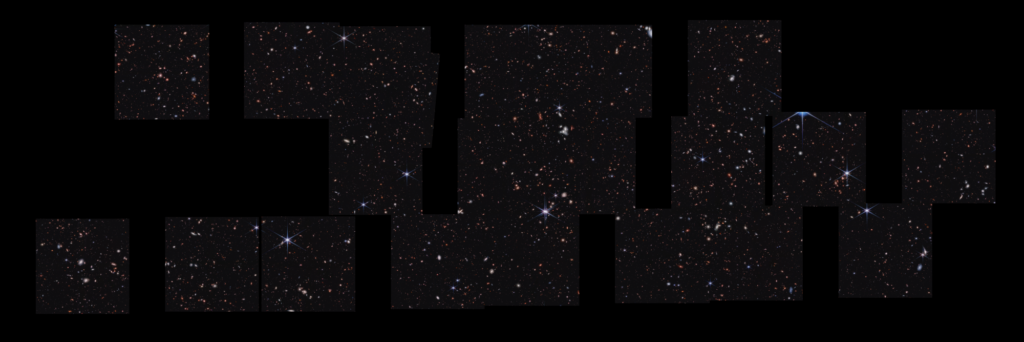Using the James Webb Telescope (JWST), researchers have discovered the most distant known supermassive black hole. It existed only 570 million years after the Big Bang.

Cosmological theories predicted that black holes were widespread in the early Universe, which had a mass comparable to the mass of the black hole at the center of our Milky Way (its mass is 4 million times the mass of the Sun). However, until recently, astronomers did not have the opportunity to find such objects and they found only giant black holes that measured billions of solar masses.
Everything changed after the launch of JWST. Thanks to its technical capabilities, researchers have gained access to previously unknown corners of the Universe. As part of the CEERS survey, they directed it to the small galaxy CEERS 1019, which existed just 570 million years after the Big Bang. The hunt was a success. JWST managed to identify an active black hole at its center. To date, this is the most distant object of this class found by astronomers. At the same time, its mass is “only” 9 million solar.
It is worth noting that despite such a “modest” size of a black hole, astronomers still find it difficult to describe the scenario of its mass gain in the time since the Big Bang. Perhaps the merger of galaxies, which gave rise to CEERS 1019, played a role in this. The JWST images show that visually it resembles three bright clumps, rather than one solid disk. It is possible that the merger of several early galaxies pushed the growth of the black hole and stimulated the processes of star formation.

In addition to the record-breaking distant black hole, as part of the CERRS survey, JWST also identified 11 galaxies that existed when the Universe was between 470 and 675 million years old. It also managed to find two more previously unknown supermassive black holes. The first existed 1.1 billion years after the Big Bang, the second — after 1 billion years.
According to https://www.nasa.gov
Follow us on Twitter to get the most interesting space news in time
https://twitter.com/ust_magazine

